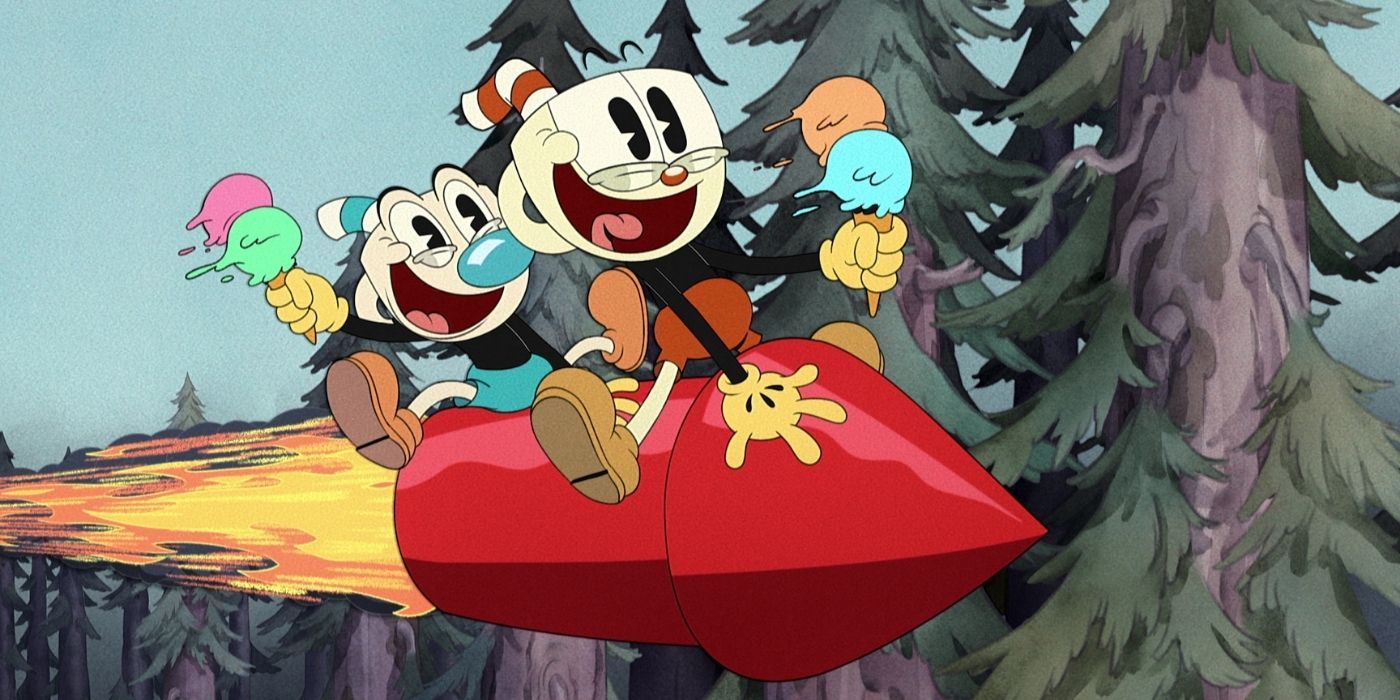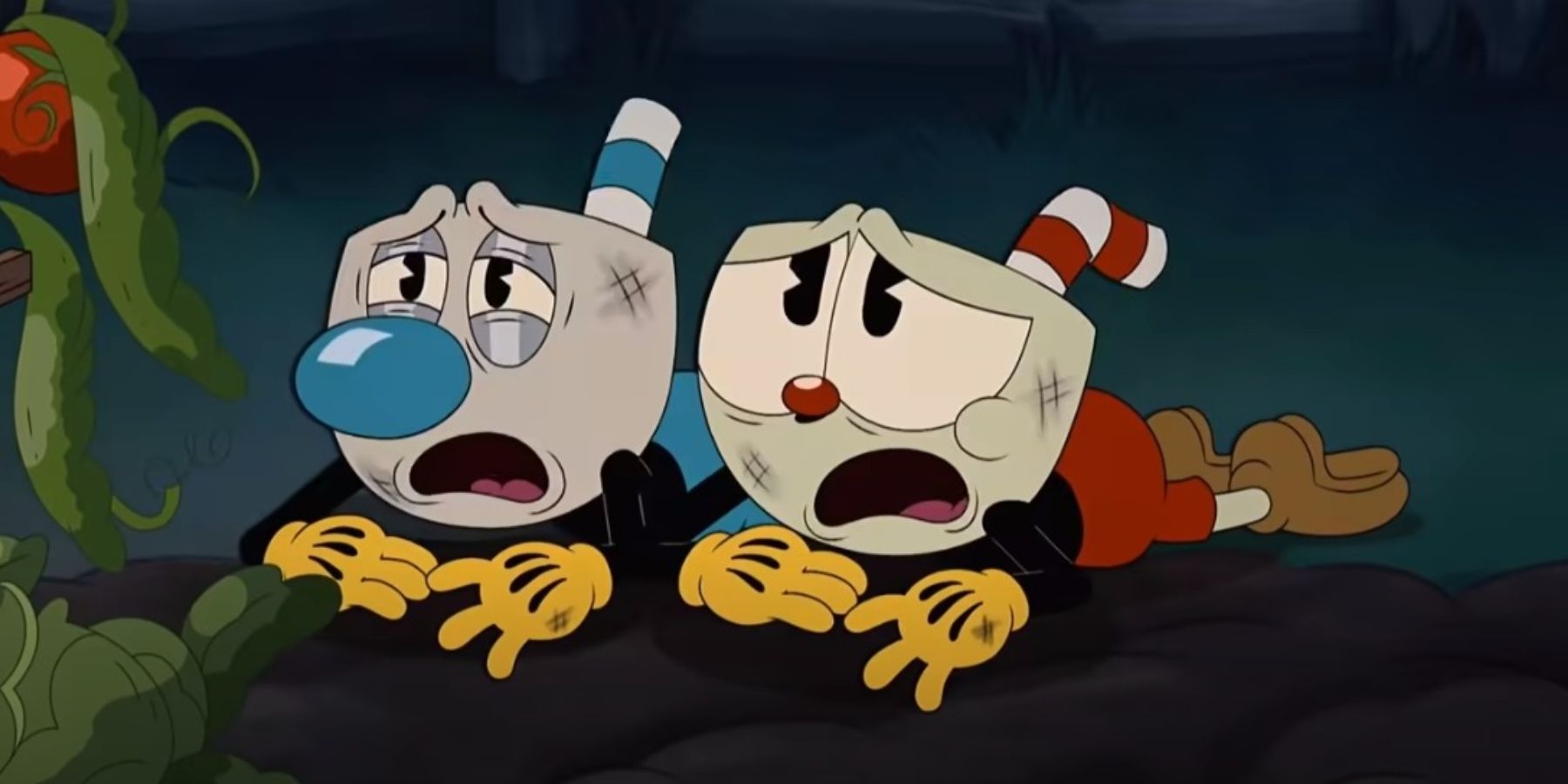While new to Netflix, Cuphead first rose to popularity as a video game created by Chad and Jared Moldenhauer. On behalf of Studio MDHR, the brother duo stepped into the role of executive producers, collaborating with the streaming service to bring their beloved, award-winning game to the small screen.
The Cuphead Show! premiered on the streaming service on Feburary 18, bringing forth the voices of Tru Valentino, Frank Todaro, and Wayne Brady as the iconic characters. The animated comedy series follows the playful antics of Cuphead and his brother Mugman in their town of Inkwell Isles. Game Rant had the opportunity to chat with the Moldenhauer about this latest adaptation, including how they were about to expand their characters, the process behind casting the show's voice actors, and the aspects they're most exciting for video game fans to see.
Game Rant: What aspects can fans of the Cuphead video game expect in the series?
Jared Moldenhauer: Well, we knew we wanted to get as much as we can into the show. There's so many different characters within the original game, so it's just a matter of how many episodes are there? How many can we squeeze in? And so far, it's pretty good. It doesn't hit everything, but that always keeps it open to what more can come our way. On top of it, we tried to put as many little easter eggs in and be helpful for the Netflix team because we know the game through and through. It's quite chock-full of little nuances and references to the game.
Chad Moldenhauer: Another thing was that we really knew that we wanted to push these characters into different situations than what the players saw in the game.That was a big must because the game is very linear and doesn't really have a massive story arc. Watching the characters interact with each other and go on adventures that are totally askew from the game was definitely a big push that we wanted.
GR: How were you able to expand on the characters through this TV show adaptation?
CM: That comes with having a great team. We can provide our own insights and personalities and the minor details for each character to give Netflix a great starting point, and then, really just like how most of the cartoons were made in the early eras, they just went kind of any direction. It was almost like, the more creative, the better.
GR: When it came to hiring the voice actors, did you have a lot of input?
CM: We had a good through-line for some of the key characters, especially the lead characters and what we thought they should sound like and what kind of accent they should have. And then, at the same time, it's a collaborative environment. Netflix would pitch ideas of how they thought the characters would sound, just the people themselves acting it out, not an actual voice actor. When they were pitching storyboards, and some of the early animatics, we could already see like, oh, yeah, that kind of voice, which we never would have thought would have worked is actually perfect. It was kind of push-and-pull and relying heavily on their whole team to come up with cool ideas.
JM: Yeah, the through-line was not simple, but we knew it should match that old 30s, 40s movie and cartoon aesthetic, that newsy approach. It was such a vague statement, but they [Netflix] have a whole handful of talents to pick from and pitch, and like my brother was saying, going through the episodes and just making up voices as you're going through, before you've even hired a voice actor, helped narrow down what was working. We wanted it to be a fresh, new sound that you're not used to hearing in a normal cartoon. Once they found the professionals and actually hired them, it was just such a joy to see it applied to each character. And then, of course, you get some surprises where you get a Wayne Brady, who's a professional, actually voicing one of your characters from the original game. It's all the extra on top that just brings so much more joy and wonder to the characters.
CM: Yeah, I think that was definitely a huge surprise. Going into this, all of us on the team thought it would just be voice actors that are only known as voice actors.
GR: Is there a scene that you're most excited for video game fans to see?
CM: There's so many big moments and there's so many small moments, it's hard to just say. This doesn't answer your question perfectly, but I am excited for the fans to see where we push the characters and the emotions that are not in the game. And that's really fun to see as the characters grow and change. Should be pretty cool. But as for a key moment, it's probably just seeing which fans pick up the easter eggs that are really hidden in there.
GR: I can already see the Reddit thread.
CM: They'll probably be picking up stuff that we didn't even notice. It'll just be something that an artist decided to put in the background.
JM: I'm in that same boat. I'm bad at picking things like top three movies of my life-time. To pick my top scene is almost impossible. I could just say like, strictly just the background work that Andrea [Fernandez] done. The beauty of all the paintings, on each set, is alone worth watching the show for. But also the musicality. Like, bringing back the 30s song and dance and then applying it to characters like the Devil or Chalice. It's so wonderful to see that type of personality and animation come alive.
GR: How did your perspective change from working on a video game to working on a TV series? I would think, in a video game, you give the player a bit of freedom to choose what happens next. But when it's a TV show, you get to hold the reins the entire time.
CM: Going into creating our first game, none of us had worked on a big project. Everything was just done in a way that worked. We thought, hey, this way is working, let's do it. And watching the process of creating a TV series, like go from writing to early conceptualizing to story-boarding, they follow a really smooth process. We picked out a lot of stuff that we're like, oh, this is brilliant, to speed up the process we have when we make games.
GR: Did your target audience change at all?
JM: Between any two mediums, there's always going to be new viewers and returning viewers. It's like, we've expanded the possibilities. But as far as age demographic, it's pretty much spot-on. When we made the game itself, we were like, let's make a game that feels exactly like games we played when we were children. We still look at both products as a full spectrum of range. Kids will enjoy it and love the characters and the silliness. But also, adults will enjoy it and appreciate all the animation and all the jokes, and things that may go over kids' heads. And then also, you may even pull in some grandparents who are just kind of taken back to their childhood and want to watch it with the grandkids. This is just a beautiful way to expand to a wider audience and see which one they want because they can both play the game or watch the show, or only stick to one. It'll be interesting to see how this does grow or change the fan base.
The Cuphead Show is currently streaming on Netflix.


.jpg)
